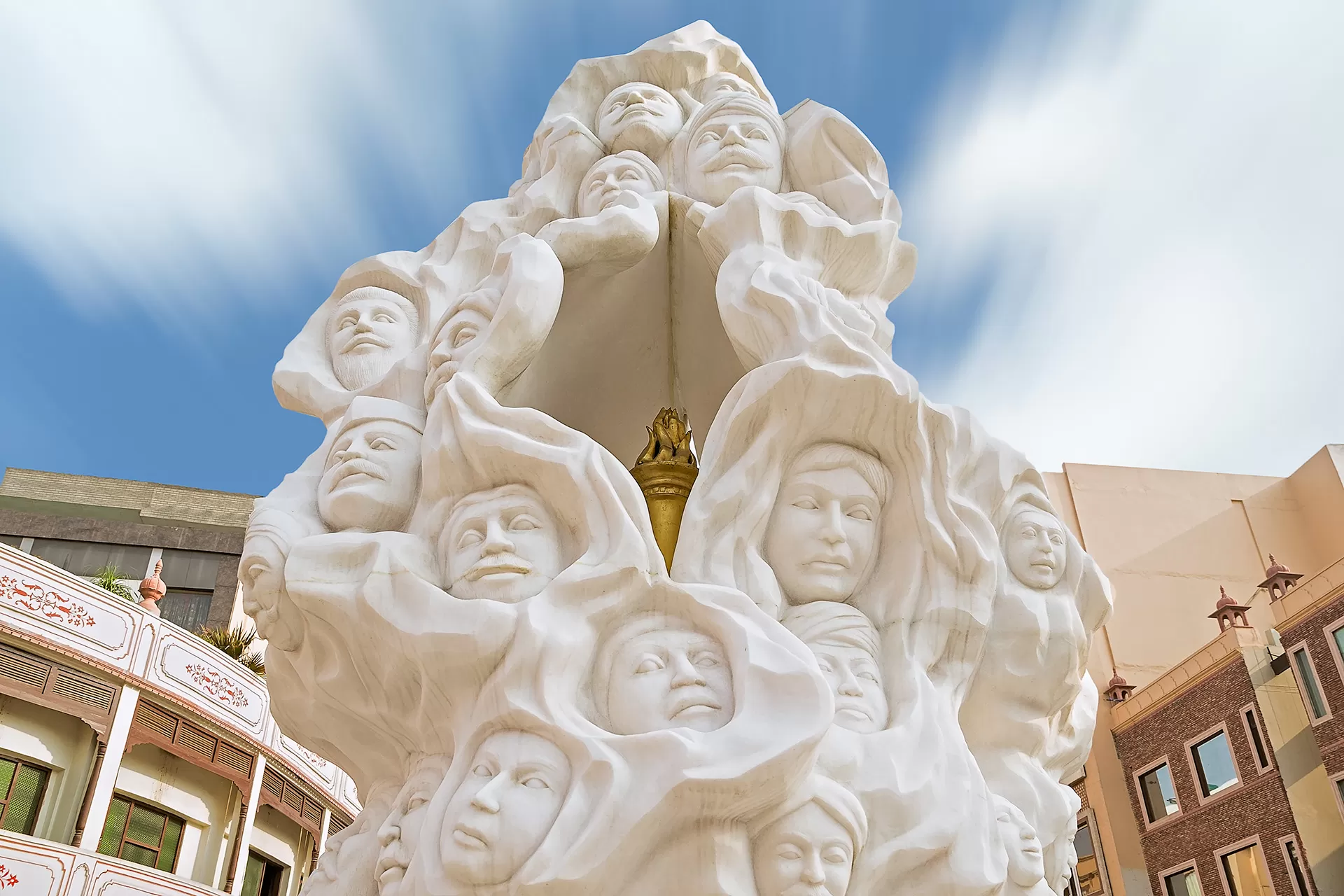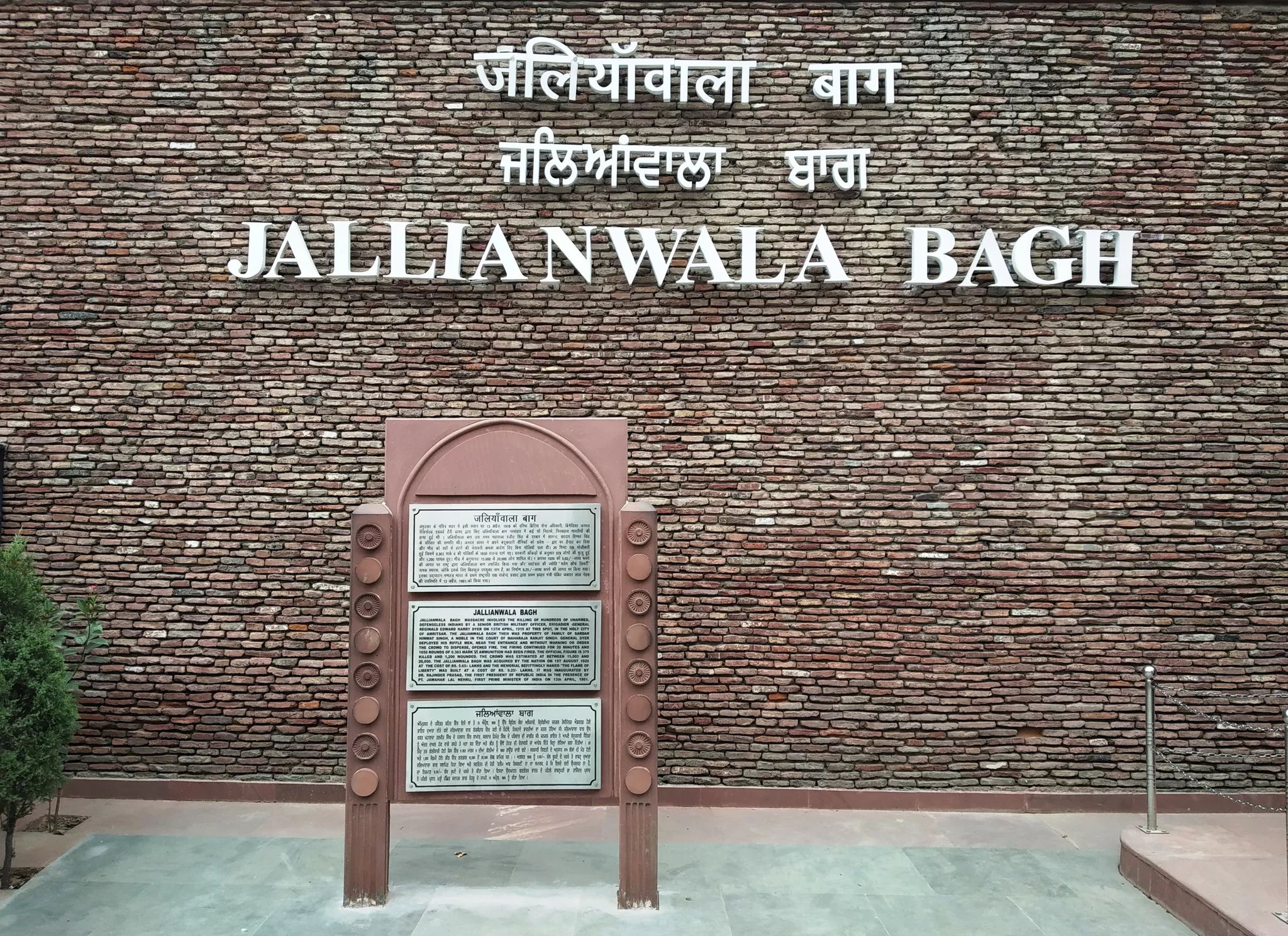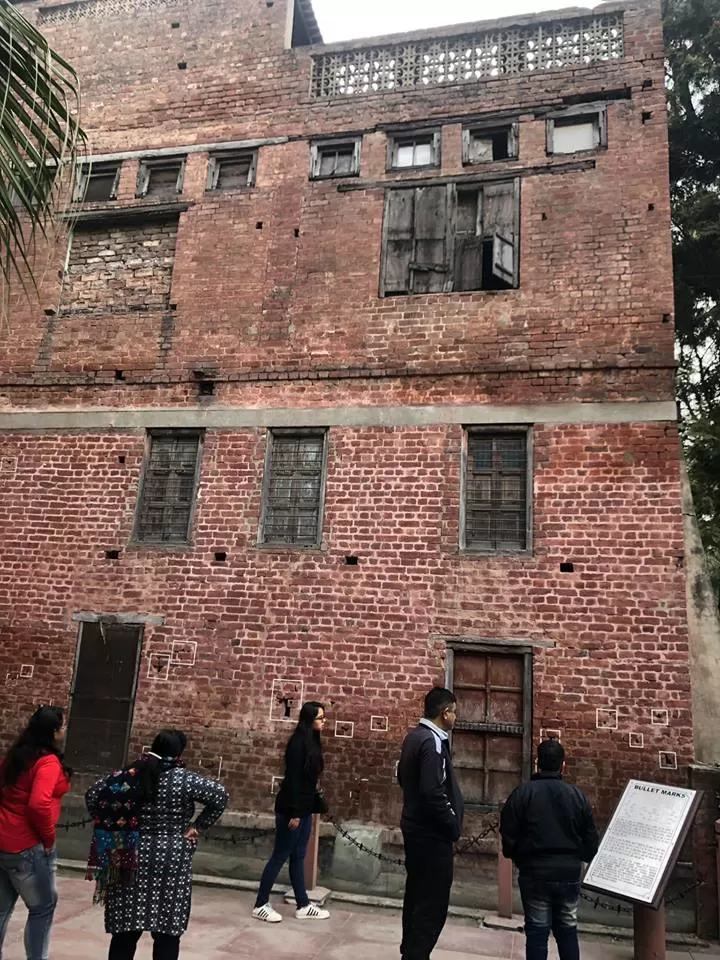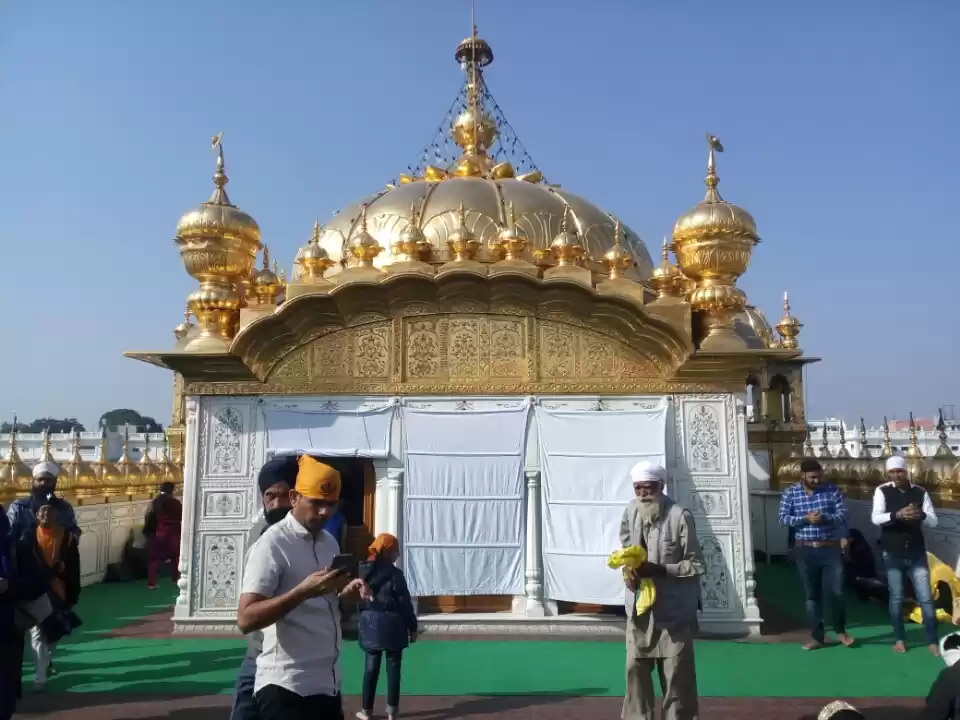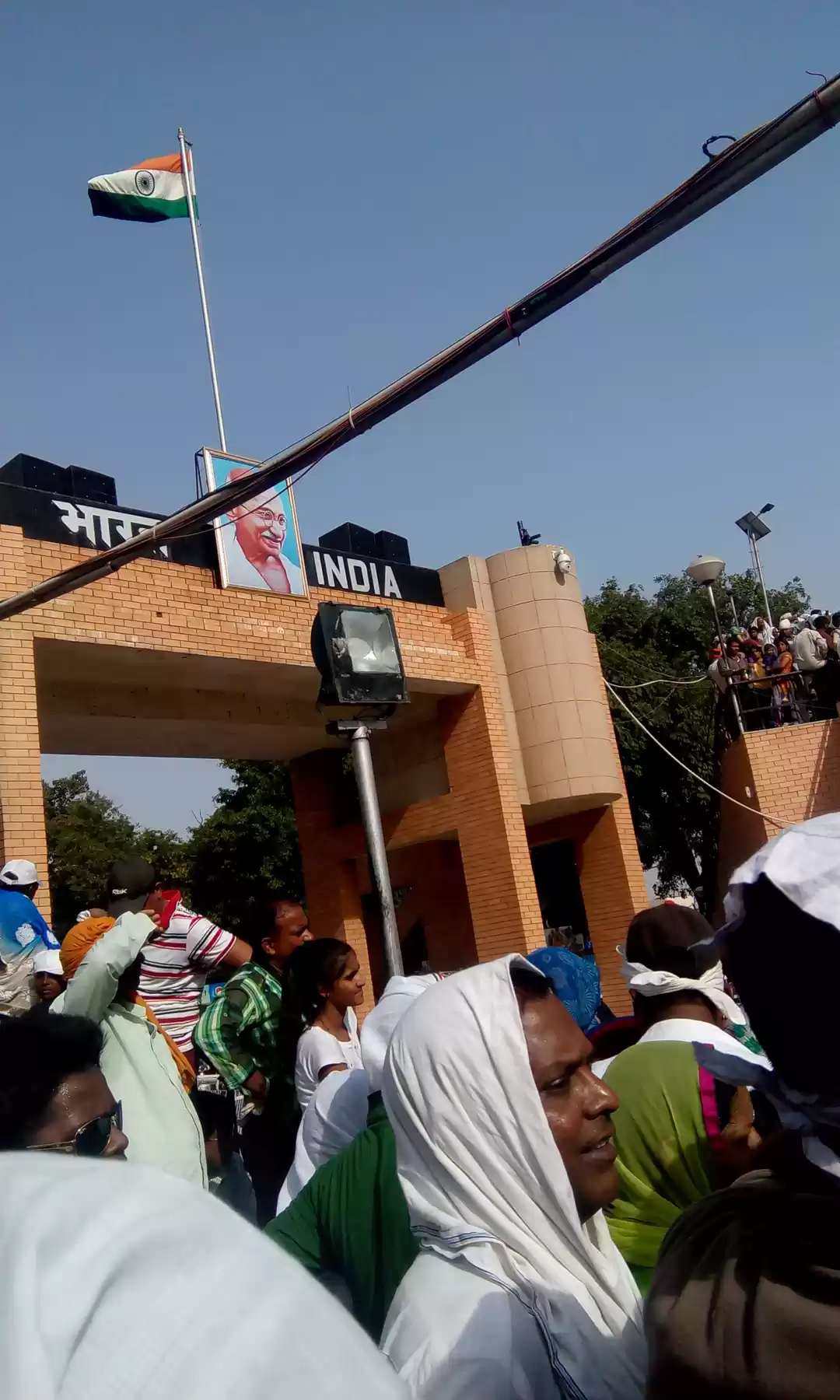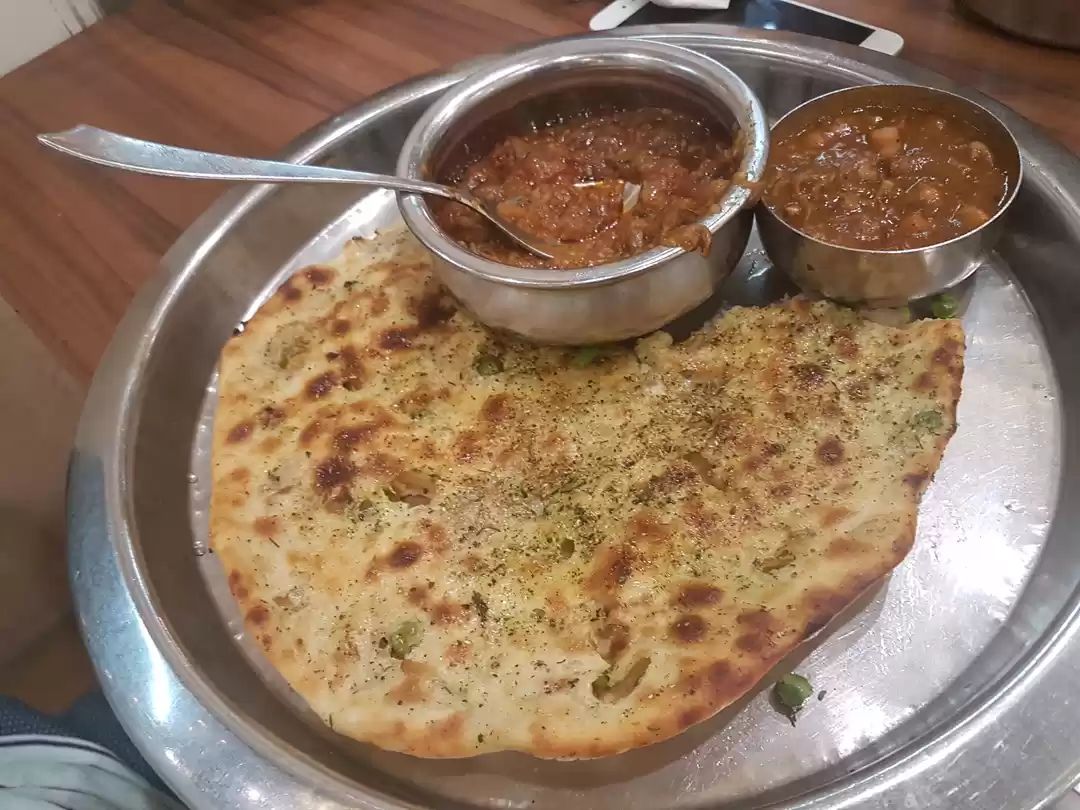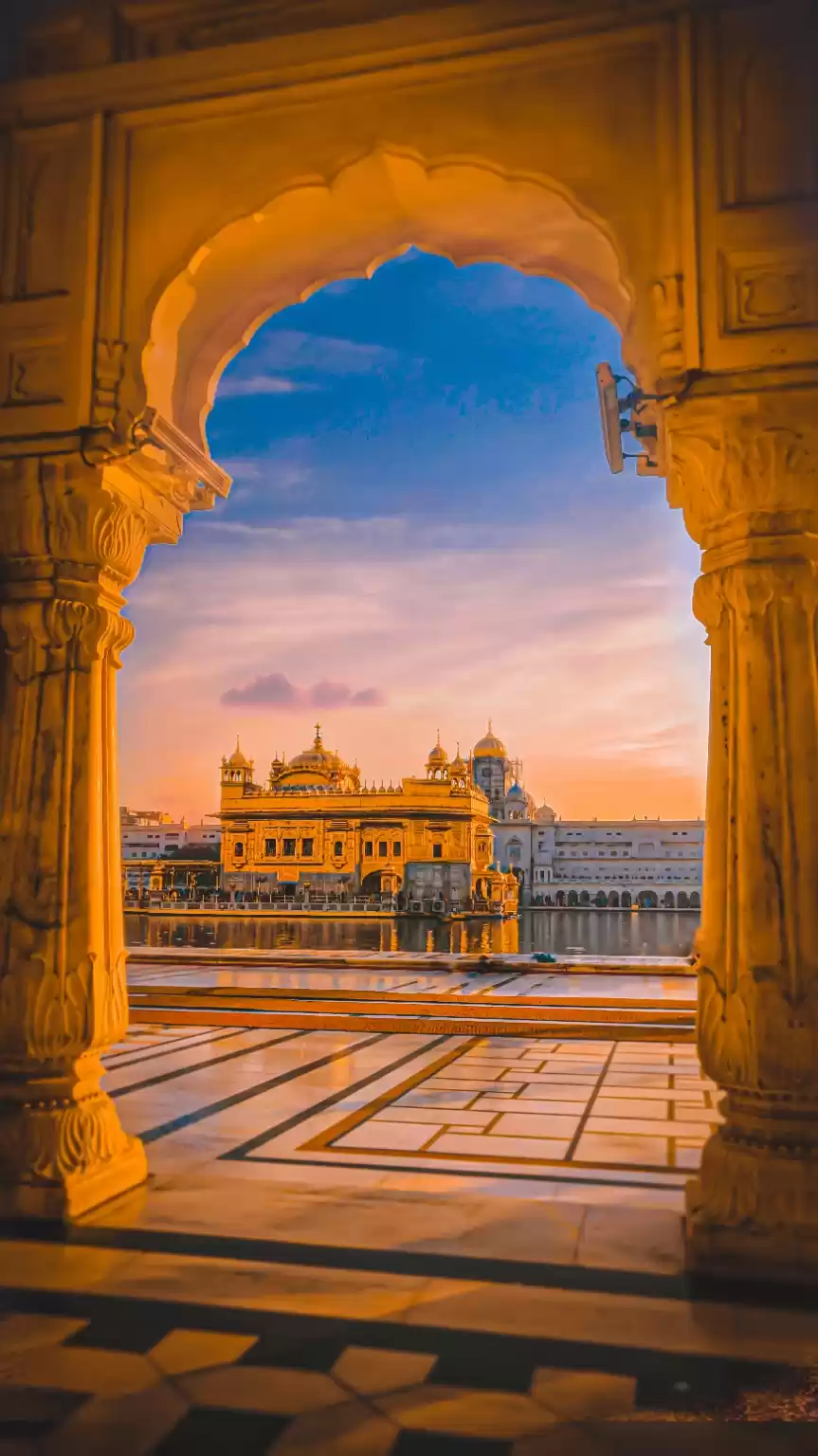Have you ever wondered what it would be like to visit a place where one of the most tragic and heroic events in Indian history took place? A place where thousands of people gathered to peacefully protest against colonial oppression, only to be brutally massacred by the British army? A place where the blood of the martyrs still stains the walls and the well? A place where the flame of liberty still burns bright to honor the freedom fighters and their sacrifice?
If you are curious about such a place, then you should definitely visit Jallianwala Bagh in Amritsar, Punjab, India. Jallianwala Bagh is a public garden and a memorial site of national importance near the Golden Temple complex in Amritsar. It is the place where the Jallianwala Bagh massacre took place on 13 April 1919, when General Dyer ordered his troops to fire at a large crowd of unarmed Indians who had gathered at Jallianwala Bagh to celebrate Baisakhi. The massacre resulted in hundreds of deaths and injuries, and sparked a nationwide outrage and resistance against British rule.
In this article, we will tell you everything you need to know about Jallianwala Bagh, such as its history, significance, attractions, location, timings, entry fee, travel options and tips. We will also share some personal stories and testimonials from survivors or relatives of victims of Jallianwala Bagh massacre to make you feel the emotions and sentiments of the people who witnessed or experienced this tragic event. By the end of this article, you will have a deeper understanding and appreciation of Jallianwala Bagh as a historical and tourist place in Amritsar.
History of Jallianwala Bagh Massacre
To understand the history of Jallianwala Bagh massacre, we need to go back to the year 1919, when India was under British colonial rule. The British government had passed the Rowlatt Act, which gave them the power to arrest and detain anyone suspected of sedition or anti-British activities without trial. This act was widely opposed by Indians, who saw it as a violation of their civil rights and liberties. Mahatma Gandhi, the leader of the Indian independence movement, launched a nationwide Satyagraha (non-violent resistance) campaign against the Rowlatt Act. He called for a general strike on 6 April 1919, which was followed by millions of Indians across the country.

The strike was successful in disrupting the normal functioning of the British administration, but it also provoked violent reactions from some sections of the Indian population. In Amritsar, Punjab, there were clashes between protesters and police, resulting in several deaths and injuries on both sides. The British authorities imposed martial law in Amritsar, banning public gatherings and meetings. They also appointed General Reginald Dyer as the military commander of Amritsar.
On 13 April 1919, which was also Baisakhi (a major festival for Sikhs and Punjabis), thousands of people gathered at Jallianwala Bagh for various reasons. Some were there to protest against the Rowlatt Act and the arrest of two local leaders, Dr. Saifuddin Kitchlew and Dr. Satya Pal. Some were there to celebrate Baisakhi and enjoy a fair. Some were there to attend a religious ceremony or visit the nearby Golden Temple. Most of them were unaware of the ban on public gatherings or the presence of British troops in the city.
General Dyer arrived at Jallianwala Bagh with his soldiers around 5 pm. He saw a large crowd of men, women and children inside the garden, which was surrounded by high walls with only one narrow exit. Without giving any warning or asking them to disperse, he ordered his troops to fire at the crowd with rifles and machine guns. The firing lasted for about 10 minutes, until the ammunition ran out. The crowd tried to escape or take cover, but many were trapped or trampled by others. Some jumped into a well inside the garden to avoid being shot.
The exact number of casualties is still disputed, but according to official British records, 379 people were killed and 1,200 were injured. However, according to Indian sources, more than 1,000 people were killed and over 1,500 were injured. The massacre was one of the deadliest and most brutal acts of violence committed by the British in India. It shocked and outraged the entire nation, and turned many Indians against British rule. It also inspired many freedom fighters and revolutionaries to take up arms and fight for independence.

The massacre was condemned by many prominent figures in India and abroad, such as Mahatma Gandhi, Rabindranath Tagore, Winston Churchill, etc. A commission of inquiry was set up by the British government to investigate the incident, known as the Hunter Commission. The commission found General Dyer guilty of a “grave error of judgement” and relieved him of his command. However, he was not prosecuted or punished for his actions. He was hailed as a hero by some sections of the British public and media, who raised a large fund for his retirement. He died in 1927 in England.
One of the most famous acts of revenge for the Jallianwala Bagh massacre was carried out by Udham Singh, a young revolutionary who had witnessed the massacre as a child. He vowed to kill General Dyer and other British officials responsible for the massacre. He travelled to London and assassinated Michael O’Dwyer, the former governor of Punjab who had endorsed Dyer’s actions, in 1940. He was arrested, tried and hanged for his crime. He is regarded as a martyr and a hero by many Indians.
Jallianwala Bagh Memorial
In 1951, the government of India established a memorial at Jallianwala Bagh to honor the martyrs and the freedom struggle. The memorial was designed by American architect Benjamin Polk, and inaugurated by Dr. Rajendra Prasad, the first president of India, in 1961. The memorial consists of several structures and exhibits that commemorate the victims and the incident.

Some of the things that visitors can see at Jallianwala Bagh memorial are:
Bullet marks on walls: The walls of Jallianwala Bagh still bear the bullet marks left by the British troops during the massacre. These bullet marks are preserved as a reminder of the horror and cruelty that took place at Jallianwala Bagh.
Martyr’s Well: The well inside Jallianwala Bagh is where many people jumped or fell to escape from the firing. According to some estimates, more than 120 bodies were recovered from the well after the massacre. The well is now covered with a mesh and a plaque that reads “Shaheedan Da Khoo” (The Well of Martyrs).
Flame Of Liberty statue: The Flame Of Liberty statue is a 30-feet high bronze sculpture that depicts a man holding a torch aloft. It symbolizes the spirit of freedom and resistance that ignited after the massacre. The statue was sculpted by Ram Sutar, a renowned Indian artist, and installed in 2006.
Amar Jawan Stambha (Eternal Flame Pillar): The Amar Jawan Stambha is a 45-feet high stainless steel pillar that has an eternal flame burning at its top. It represents the sacrifice and courage of the martyrs who laid down their lives for the nation. The pillar was erected in 2009.
Martyr’s Gallery museum: The Martyr’s Gallery museum is a small museum that displays photographs, paintings, documents, artifacts and audio-visuals related to Jallianwala Bagh massacre and its aftermath. It also has a wall with names of all the identified victims of the massacre.
Sound and light show: The sound and light show is a nightly show that narrates the story of Jallianwala Bagh massacre using lights, sounds and special effects. It recreates the scene of the massacre and its impact on Indian history and culture.
How to Reach Jallianwala Bagh
Jallianwala Bagh is located near the Golden Temple road in Amritsar, Punjab, India. It is easily accessible from various places in Amritsar and nearby cities by different modes of transport such as bus, train, taxi etc.
Here are some details on how to reach Jallianwala Bagh from different points in Amritsar and nearby cities:

From Amritsar railway station:
Jallianwala Bagh is about 2 km away from Amritsar railway station. You can take an auto-rickshaw or a cycle-rickshaw from outside the station to reach Jallianwala Bagh in about 10 minutes. The fare is around Rs 50-100.
From Amritsar airport:
Jallianwala Bagh is about 13 km away from Amritsar airport. You can take a taxi or an Ola/Uber cab from outside the airport to reach Jallianwala Bagh in about 30 minutes. The fare is around Rs 300-500.
From Delhi:
Jallianwala Bagh is about 450 km away from Delhi. You can take a train or a bus from Delhi to Amritsar, which takes about 6-8 hours. The train fare is around Rs 500-1000, and the bus fare is around Rs 700-1200.
You can also take a flight from Delhi to Amritsar, which takes about an hour. The flight fare is around Rs 2000-4000. From Amritsar railway station or airport, you can follow the same directions as mentioned above to reach Jallianwala Bagh.
From Chandigarh:
Jallianwala Bagh is about 230 km away from Chandigarh. You can take a train or a bus from Chandigarh to Amritsar, which takes about 4-5 hours. The train fare is around Rs 300-600, and the bus fare is around Rs 400-800. You can also take a taxi or an Ola/Uber cab from Chandigarh to Amritsar, which takes about 3-4 hours.
The taxi fare is around Rs 3000-4000. From Amritsar railway station or airport, you can follow the same directions as mentioned above to reach Jallianwala Bagh.
You may also like to give it a read: A century of a catastrophe but still no apology
Best Time to Visit Jallianwala Bagh
The best time to visit Jallianwala Bagh depends on the weather conditions and festivals in Amritsar. Here are some factors to consider while planning your visit to Jallianwala Bagh:

Weather:
Amritsar has a semi-arid climate, with hot summers and cold winters. The average temperature ranges from 5°C in January to 34°C in June. The monsoon season lasts from July to September, bringing moderate rainfall and humidity. The best time to visit Jallianwala Bagh in terms of weather is from October to March, when the climate is pleasant and comfortable for sightseeing.
Festivals:
Amritsar is a city of festivals, and Jallianwala Bagh is a place of significance for many of them. Some of the festivals and events that take place at or near Jallianwala Bagh throughout the year are:
Baisakhi: Baisakhi is the harvest festival and the new year for Sikhs and Punjabis, celebrated on 13 or 14 April every year. It is also the anniversary of the Jallianwala Bagh massacre, and a day of remembrance and tribute for the martyrs. On this day, thousands of people visit Jallianwala Bagh to pay their respects and offer prayers. There are also cultural programs and performances at Jallianwala Bagh and nearby venues.
Guru Nanak Jayanti: Guru Nanak Jayanti is the birth anniversary of Guru Nanak, the founder of Sikhism, celebrated on the full moon day of Kartik month (usually in November). It is one of the most important festivals for Sikhs, who visit the Golden Temple and other gurudwaras in Amritsar to offer prayers and participate in processions and langars (community meals). Jallianwala Bagh is also visited by many devotees on this day, as it is close to the Golden Temple.
Diwali: Diwali is the festival of lights, celebrated on the new moon day of Kartik month (usually in October or November). It is one of the most popular festivals in India, celebrated by Hindus, Sikhs, Jains and Buddhists alike. It marks the victory of good over evil, light over darkness, and knowledge over ignorance. On this day, people decorate their homes and streets with lamps, candles, and fireworks. They also exchange gifts and sweets with their friends and family. Jallianwala Bagh is also illuminated with lights and candles on this day, creating a beautiful sight for visitors.
Republic Day: Republic Day is the national day of India, celebrated on 26 January every year. It marks the date when India adopted its constitution in 1950, becoming a sovereign democratic republic. On this day, there are flag hoisting ceremonies, parades, cultural programs and patriotic speeches across the country. At Jallianwala Bagh, there is a special ceremony where the president of India pays homage to the martyrs and lays a wreath at the Flame Of Liberty statue.
Independence Day: Independence Day is another national day of India, celebrated on 15 August every year. It marks the date when India gained its independence from British rule in 1947, after a long struggle led by Mahatma Gandhi and other freedom fighters.
On this day, there are flag hoisting ceremonies, cultural programs and patriotic speeches across the country. At Jallianwala Bagh, there is a special ceremony where the prime minister of India pays homage to the martyrs and lays a wreath at the Flame Of Liberty statue.
Visiting Jallianwala Bagh during these festivals and events can add to the cultural and historical value of the place, and make you feel the emotions and sentiments of the people who celebrate or commemorate these occasions. You can also enjoy some special attractions and activities that take place at Jallianwala Bagh and nearby venues during these festivals and events, such as music, dance, drama, poetry, art, food, etc.
Tips for Visiting Jallianwala Bagh
To make the most of your visit to Jallianwala Bagh, here are some useful tips and suggestions for you:
1. Carry a water bottle and wear comfortable shoes, as you will have to walk a lot inside and outside Jallianwala Bagh.
2. Respect the sanctity and solemnity of Jallianwala Bagh, as it is a place of reverence and remembrance for many Indians. Do not litter, make noise, or take selfies at inappropriate places.
3. Visit the Martyr’s Gallery museum to learn more about the history and significance of Jallianwala Bagh massacre and its aftermath. You can also watch the sound and light show to get a vivid and realistic impression of the incident.
Places of Attraction Near Jallianwala Bagh
Visit the other places near Jallianwala Bagh that are related to its history, culture, or significance. Some of these places are:

The Golden Temple:
The Golden Temple is the holiest shrine of Sikhism, located just a few minutes away from Jallianwala Bagh. It is a stunning architectural marvel that attracts millions of pilgrims and tourists every year. It is also a symbol of peace, harmony, and service, as it welcomes people of all faiths and backgrounds. You can visit the Golden Temple to admire its beauty, offer prayers, listen to hymns, or partake in langar.

The Partition Museum:
The Partition Museum is a museum dedicated to the partition of India and Pakistan in 1947, which resulted in one of the largest migrations and massacres in human history. It is located near the Town Hall in Amritsar, about 1 km away from Jallianwala Bagh. It displays photographs, documents, artifacts, oral histories, and audio-visuals that narrate the stories of partition survivors and victims. You can visit the Partition Museum to learn about the causes, consequences, and impact of partition on India and its people.
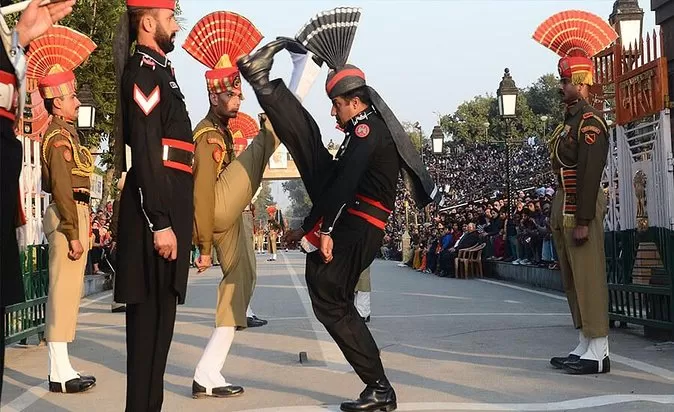
The Wagah Border:
The Wagah Border is the border between India and Pakistan, located about 30 km away from Amritsar. It is famous for its daily flag-lowering ceremony that takes place at sunset. The ceremony involves a display of military drill and patriotic fervor by both sides. It attracts thousands of spectators from both countries who cheer for their respective nations. You can visit the Wagah Border to witness this unique spectacle of rivalry and camaraderie.
We hope this article has given you a comprehensive and insightful guide on Jallianwala Bagh in Amritsar. Jallianwala Bagh is not just a historical land, but also a source of inspiration and respect for many Indians. It reminds us of the sacrifices and struggles of our ancestors who fought for our freedom and dignity. It also motivates us to uphold the values and ideals that they stood for.
So, what are you waiting for? Visit Jallianwala Bagh today and experience its history, significance, and attractions for yourself. You will not regret it!






